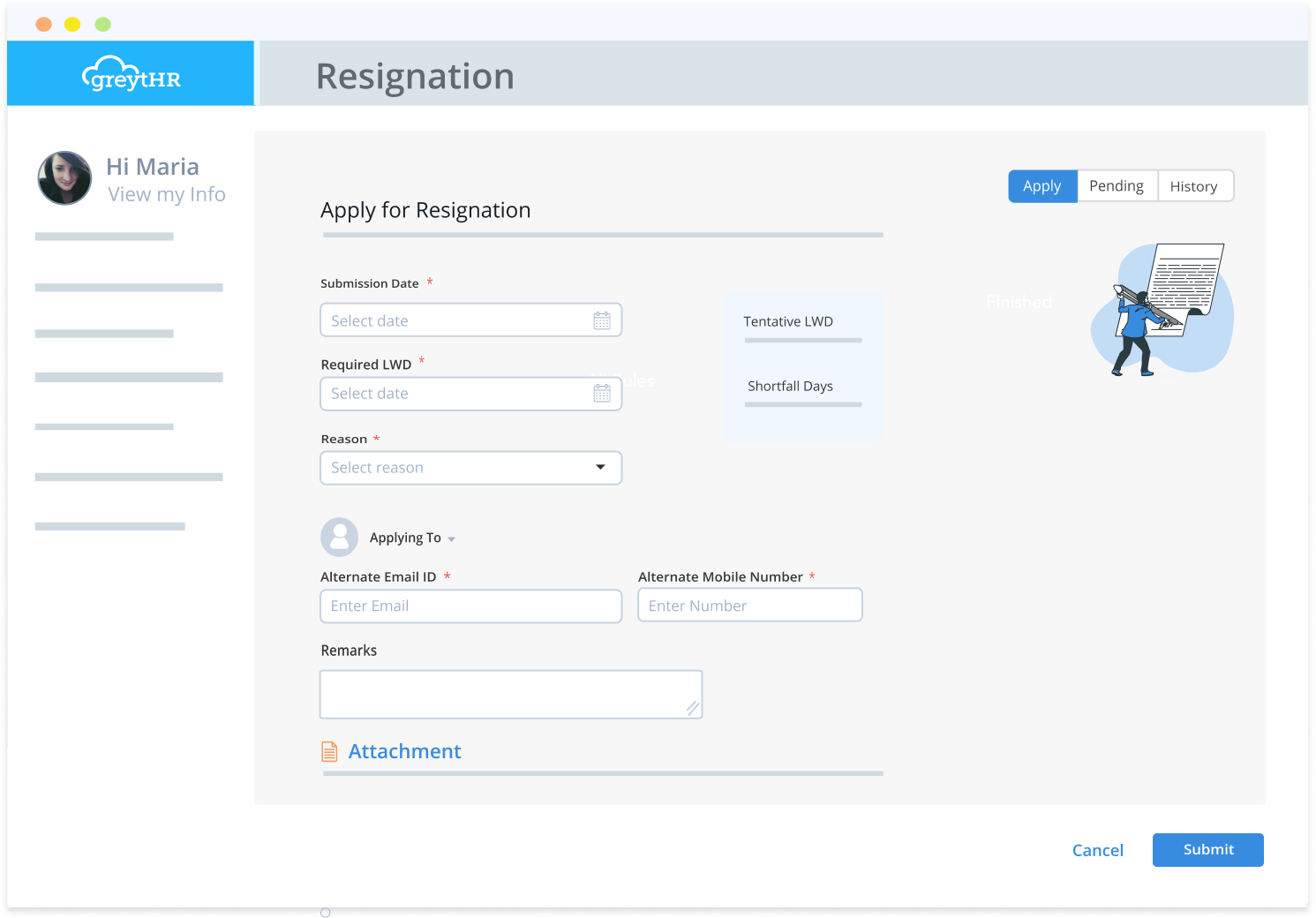Can the exit of a company’s employees be as graceful as their entry? Is it possible to expedite the tasks in the resignation process? Should an employee always follow up with multiple reviewers after tendering the resignation?
Recently released to automate and streamline the resignation process, resignation workflow initiates the first step towards the offboarding and exit of an employee. The new, paperless workflow infuses greater transparency, minimizes complexities, and speeds approvals.
Resignation workflow is configured via the greytHR admin. HR can assign different levels of reviewers as per the exit policy.
Resignation Workflow Features
1. Resignation application via the employee portal
Employees can initiate the resignation workflow from the employee portal when they decide to put in the papers.

2. Application tracking enabled for employees, managers, and HR
The portal allows employees to track the status of their resignation applications. The system instantly shows the tentative last working day and shortfall days. HR can view the applications of all the outgoing and past employees in a single repository.
3. Automation of approvals, data collection, and notifications
Manual tracking of resignation data can turn out to be a nightmare when an organization scales. Multiple approvals and lengthy follow-up processes lead to delays and employee dissatisfaction. The resignation workflow simplifies and automates the task of processing the application. Also, instant notifications for all actions make the process seamless and user-friendly.
4. Option for employees to withdraw their resignation
It’s not uncommon to see an employee change his/her mind after taking that difficult decision and then withdrawing the resignation request. In some cases, the individual might even want to extend the notice period due to a critical project requirement. The built-in workflow in the tool offers the provision to perform all these tasks efficiently and transparently.
5. Provision for managers to approve/revoke applications
Timely exits depend on timely approvals. When an employee applies for resignation through the employee self-service (ESS) portal, the reviewer's name is automatically displayed. The concerned managers can view the resignation details and forward the request to the next level or revoke the same and leave a remark.
6. Automatic triggering of checklist and tasks:
The fact that unstructured data collection leads to missed information and process delays is a no-brainer. When an employee’s resignation is accepted, the system triggers an exit checklist with a provision to customize the tasks on a case-to-case basis. Auto-tracking captures all the information required for a smooth clearance and exit with all the essential documents.









